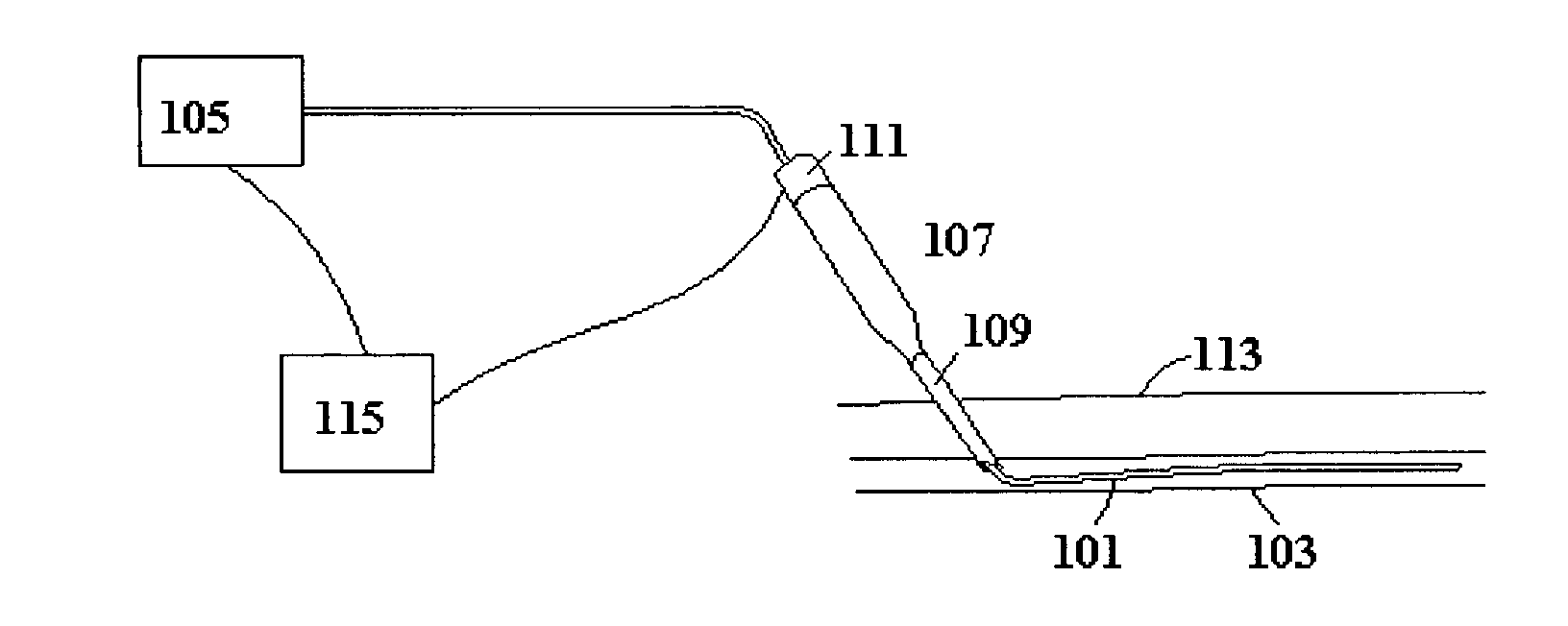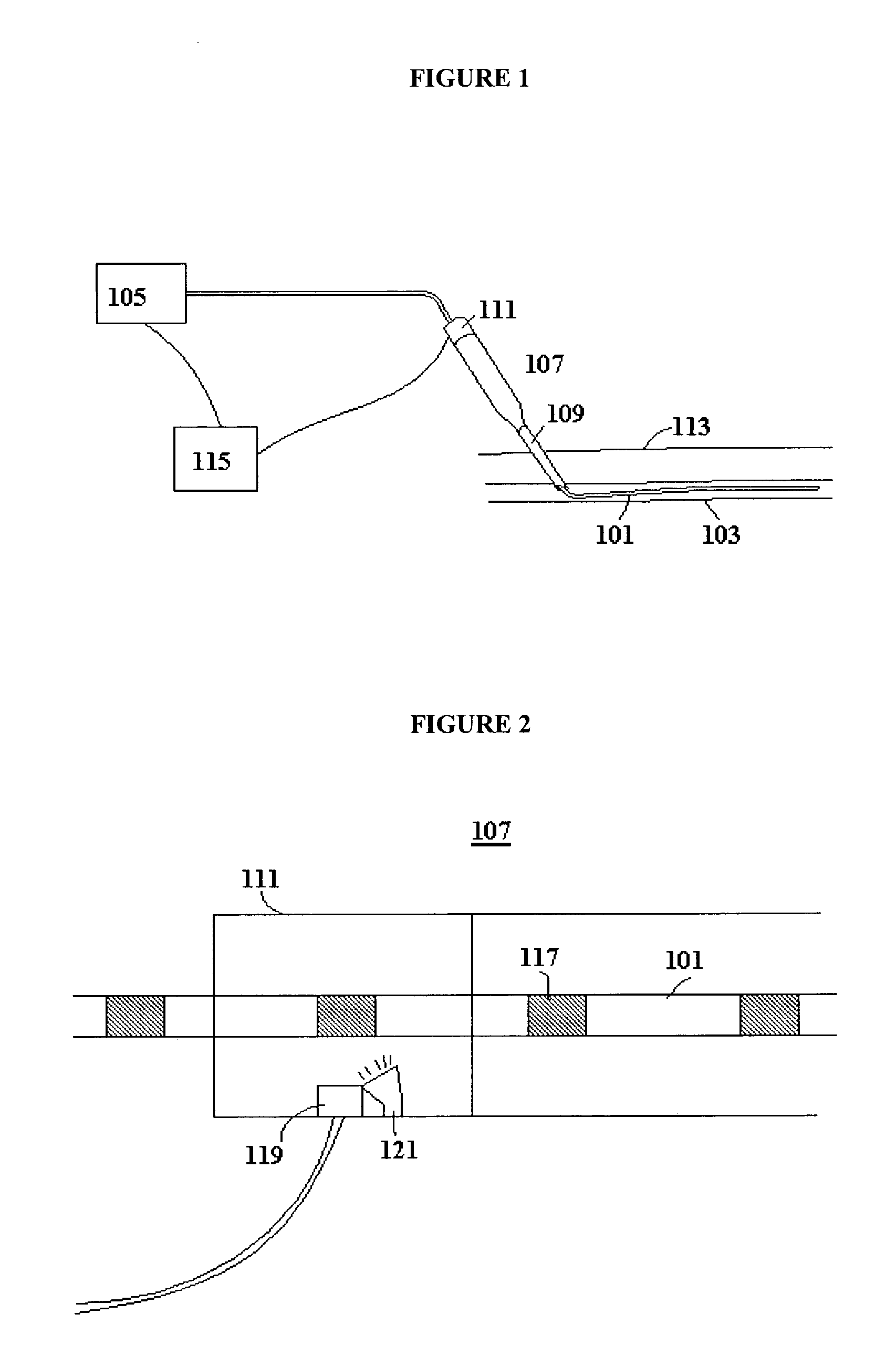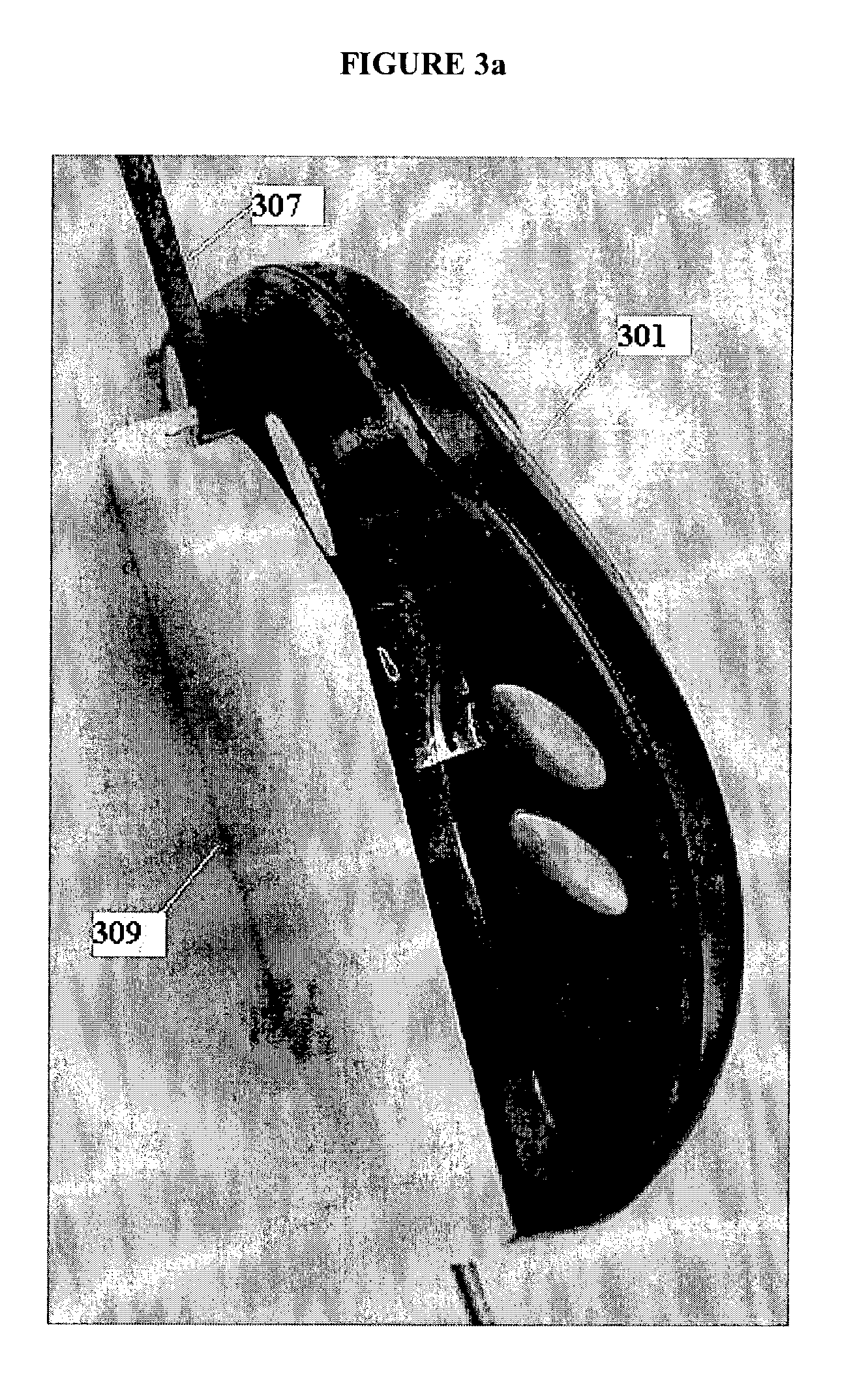Power regulated medical underskin irradiation treament system
a technology of irradiation treament and power regulation, which is applied in the field of power regulation of medical underskin irradiation treament system, can solve the problems of compromising the safety of radiation treatment, inability to properly regulate output power, and increasing the risk of perforation, scarring or skin color change, so as to achieve greater control over the procedure
- Summary
- Abstract
- Description
- Claims
- Application Information
AI Technical Summary
Benefits of technology
Problems solved by technology
Method used
Image
Examples
Embodiment Construction
[0050] In the treatment of varicose veins, the size of the optical fiber used will vary depending on the diameter of the vein to be treated. To treat veins up to 3 or 4 mm in size, a 400-micron optical fiber is inserted into the vein. For veins greater than 4 mm a 600-micron fiber is used.
[0051] The laser is set on continuous pulse mode with a working time of 0.3 seconds and an idle time of 0.3 seconds. The laser output power is varied depending upon vein size. For a vein less than 4 mm in diameter, 7-10 joules of power is needed; for veins greater than 4 mm in diameter, 12-15 joules are needed.
[0052] Prior to treatment, abnormal lengths of the vein are identified from prior examinations. Power requirements as described above and a preferred pull-out speed is determined. Local anesthetic is then applied along the marked line of treatment. Next, the course of the vein is detected and treated as follows: the optical fiber is inserted into the vein and the laser is set to single pulse ...
PUM
 Login to View More
Login to View More Abstract
Description
Claims
Application Information
 Login to View More
Login to View More - R&D
- Intellectual Property
- Life Sciences
- Materials
- Tech Scout
- Unparalleled Data Quality
- Higher Quality Content
- 60% Fewer Hallucinations
Browse by: Latest US Patents, China's latest patents, Technical Efficacy Thesaurus, Application Domain, Technology Topic, Popular Technical Reports.
© 2025 PatSnap. All rights reserved.Legal|Privacy policy|Modern Slavery Act Transparency Statement|Sitemap|About US| Contact US: help@patsnap.com



